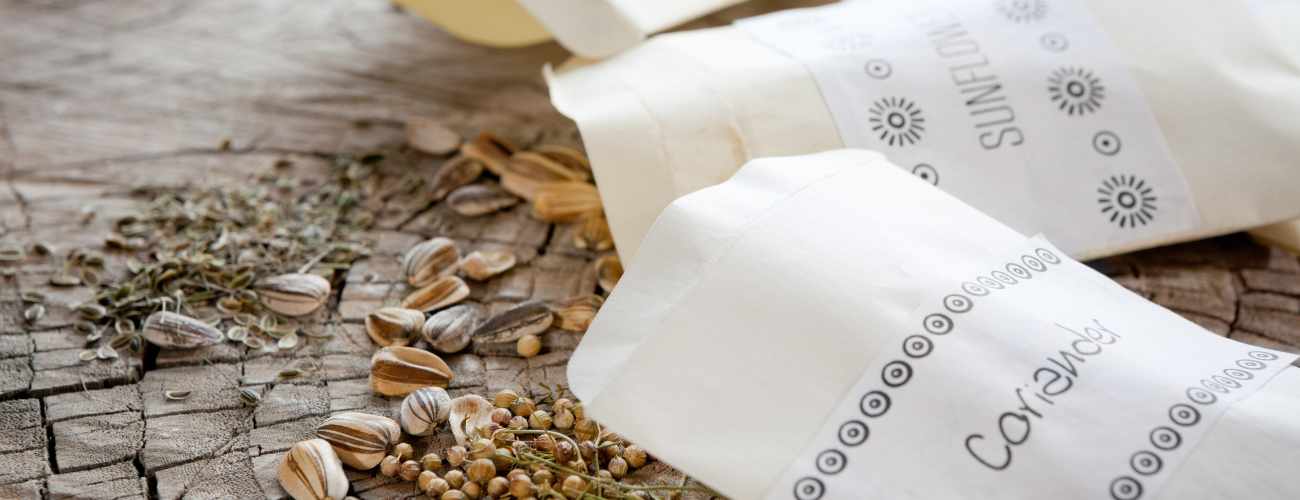If you’re like me, you know that the key to a flourishing garden starts with successful seed germination. But have you ever wondered how to give your seeds the best possible start?
Seed treatment boosts germination and you can treat your seeds by various methods: Soaking hydrates, scarification aids water absorption, stratification simulates cold, tea provides nutrients, hydrogen peroxide protects and vermiculite will help your seeds retain moisture.
If this is the first time you have heard some of these terms, keep reading to find out more!
How Do You Treat Seeds for Better Germination?
Scarification
Ever heard of scarification? No, it’s not a fancy word for a gardening mishap. Scarification is all about gently roughing up the seed coat to help water penetrate more easily. You can do this by lightly rubbing the seeds with sandpaper or nicking them with a file. It’s like giving your seeds a secret handshake with water.
Now, let me break it down for you. Scarification isn’t necessary for all seeds, but it can work wonders for hard-coated ones like morning glories or sweet peas. Just be gentle -no need to go all Rambo on your seeds. A light touch is all it takes to give them a helping hand.
Stratification Sensation
Next up, we’ve got a technique called stratification. It sounds fancy, but it’s just a way of mimicking winter conditions for certain seeds that need a cold spell to germinate.
Here’s how it works: Place your seeds in a damp paper towel or peat moss, pop them in a plastic bag, and stash them in the fridge for a few weeks. This chilly break signals the seeds that it’s time to wake up and sprout when they hit the warm soil. It’s like giving them a wake-up call after a cosy winter’s nap.
Soaking in Flavour with Tea
Who knew that tea wasn’t just for sipping? Tea can be a game-changer for your seeds. It’s like giving them a burst of energy.
All you need to do is brew a weak tea solution (no need for the good stuff; plain black tea works fine). Let it cool, then soak your seeds for a few hours. The natural compounds in tea can help prevent fungal diseases while giving your seeds a boost of nutrients.
Protect with Hydrogen Peroxide – A Non-Organic Option
While I’m all about organic gardening, it’s worth mentioning that hydrogen peroxide can offer seeds some extra protection. If you choose to use it, mix one part hydrogen peroxide with nine parts water and soak your seeds for about 30 minutes. This non-organic method can help fend off pathogens and prevent diseases. However, personally, I prefer sticking to natural treatments in my garden.
Keep it Moist with Vermiculite
Now, let’s talk about keeping your seeds cosy and moist. Vermiculite is your secret weapon here. Vermiculite is commonly used in seed starting and germination. It provides a suitable environment for seedlings by retaining moisture and offering a loose, well-aerated medium for root development.
After treating your seeds, place them in a container filled with vermiculite. This lightweight, moisture-retaining material creates the perfect environment for germination.

What NOT to Do When Germinating Seeds?
Now, let’s talk about the not-so-cool stuff you might accidentally do when germinating seeds. No worries, though – we’ve got your back with these friendly “don’ts” to keep your promising green squad happy and thriving.
#1: Mindful Watering
In the land of germination, a thoughtful approach to watering is crucial. Rather than flooding the soil, adopt a measured watering routine. Strive to maintain consistent soil moisture without veering into excess, nurturing an environment which is ideal for healthy seed development.
#2: Prudent Planting Depth
Consider the planting depth as a crucial factor in the start of seed germination. Planting too deep may obstruct the appearance of seedlings, while a shallow disposition may expose them to hostile conditions. Stick to recommended planting depths, respecting the unique requirements of each seed type.
#3: Prioritize Seed Freshness
Make sure you use fresh, high-quality seeds. Unlike certain commodities, seeds do not appreciate with age. Opting for recently harvested seeds from reputable sources will undoubtedly help to the success of your botanical endeavours.
#4: Temperature Prudence
Understanding temperature preferences is important in providing an environment helpful to seed germination. Each seed variety shows different thermal requirements; check out the accompanying guidelines to establish a temperature schedule that aligns with these specifications.
#5: Illuminate Thoughtfully
The role of light in the germination process should not be understated. Make sure there is a sufficient light source for emerging seedlings. Whether through natural sunlight or artificial means, strike a balance that nurtures growth without overwhelming the delicate seedlings. If you are unsure about the need of grow lights, I encourage you to read my blog on deciding whether you need grow lights or not.

#6: Foster Adequate Ventilation
Air circulation is a frequently overlooked yet integral aspect of germination success. Establishing a well-ventilated environment mitigates the risk of fungal issues and fosters an encouraging environment for seedling development.
#7: Handle with Precision
Approach the handling of germinating seeds with a degree of precision and gentleness. Minimize disturbances to the delicate root systems and developing shoots, ensuring a smooth transition towards robust seedling growth.
Other Tips for Successful Seed Germination
If you are after even more tips on how to ensure successful seed germination, keep on reading !
Protect Your Seeds with Proper Storage
Once you’ve given your seeds the royal treatment, it’s essential to store them correctly for future planting seasons. After all, you’ve invested time and effort in nurturing these seeds, and you want to make sure they stay viable.
Store your treated seeds in a cool, dry place. You can use small envelopes or airtight containers to protect them from moisture and pests. Be sure to label each container with the seed type and the treatment date. Properly stored seeds can remain viable for several years, ensuring a steady supply of healthy seeds for your garden.
If you are wondering how long you can store your seeds before they are no good for use, read my blog on saving organic vegetable seeds where I go over these details.

Buddy Up with Companion Planting
Imagine your garden as a little community where plants can be friends. Companion planting is like matchmaking for plants. For example, think of marigolds and veggies as best friends. Marigolds have a special power-they can chase away the bugs that bother your veggies. They’re like the garden superheroes, protecting their pals.
And then there’s basil. Picture it as the sidekick for your tomatoes. Basil not only adds a delicious flavour to tomatoes but also helps them grow better.
So, companion planting is all about choosing plant buddies that help each other out.
Cook Up Some Organic Fertilizer
Guess what? Your kitchen leftovers can be gold for your garden! Homemade organic fertilizers are super easy and super effective. Just start composting those fruit peels, eggshells, and used coffee grounds. It’s like a gourmet feast for your plants! And for a potassium kick, soak banana peels in water for a fabulous flower-boosting tea. Your plants will love you for this nutritious treat!
Keep Pests at Bay, the Nature-Friendly Way
Pests can be pesky, but I’ve got some gentle giant solutions. Ever tried neem oil? It will protect your plants without hurting the good bugs. And for a DIY pest deterrent, whip up garlic or chilli spray. Just blend, dilute, and spritz! It’s a simple, spicy trick to keep your garden happy and healthy – all without the harsh stuff.
If you are interested to learn more about organic pest control, I have written a blog on this topic which will give you great solutions.
Remember, every seed you treat is a step closer to a flourishing garden. Treat your seeds carefully, and they’ll reward you with healthy sprouts and a vibrant garden. Gardening is a journey filled with discovery and satisfaction, and I hope these tips help you along the way.



